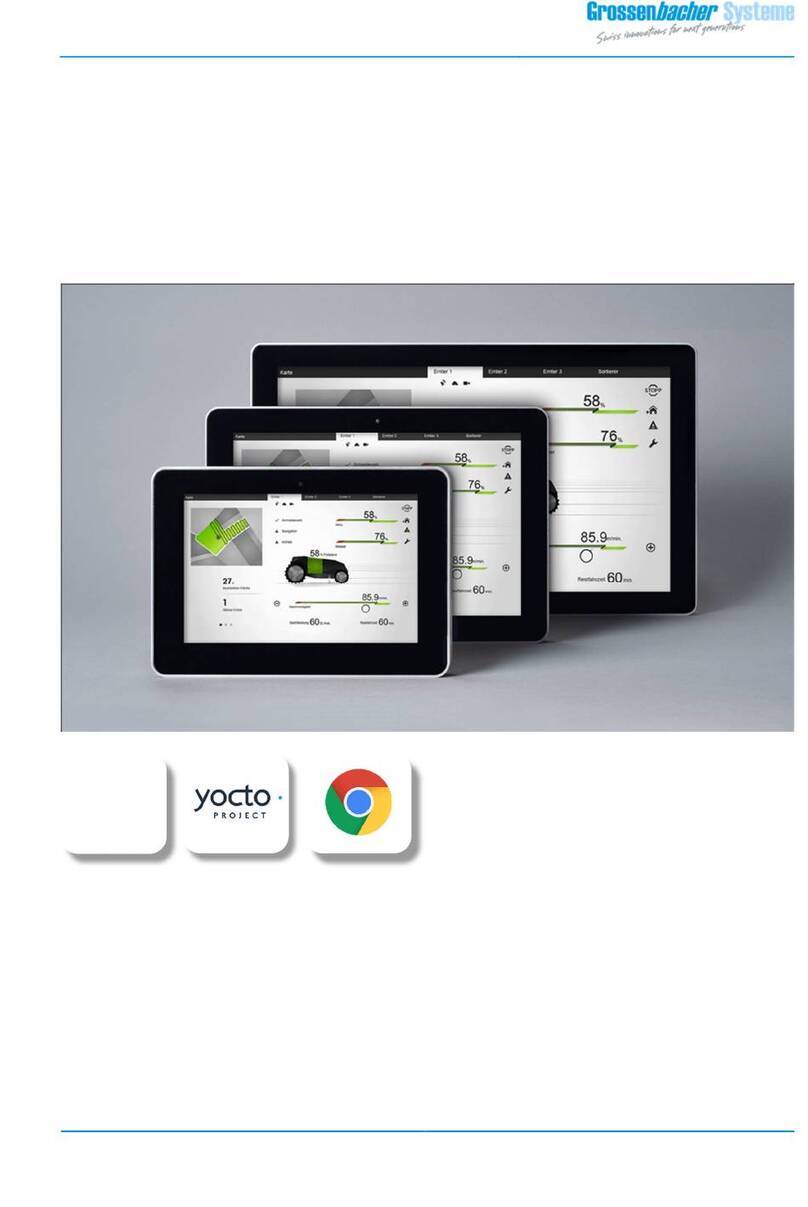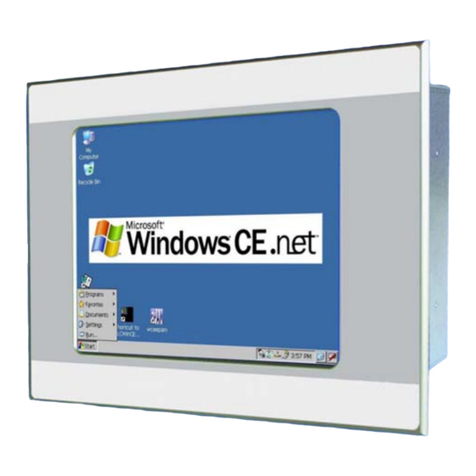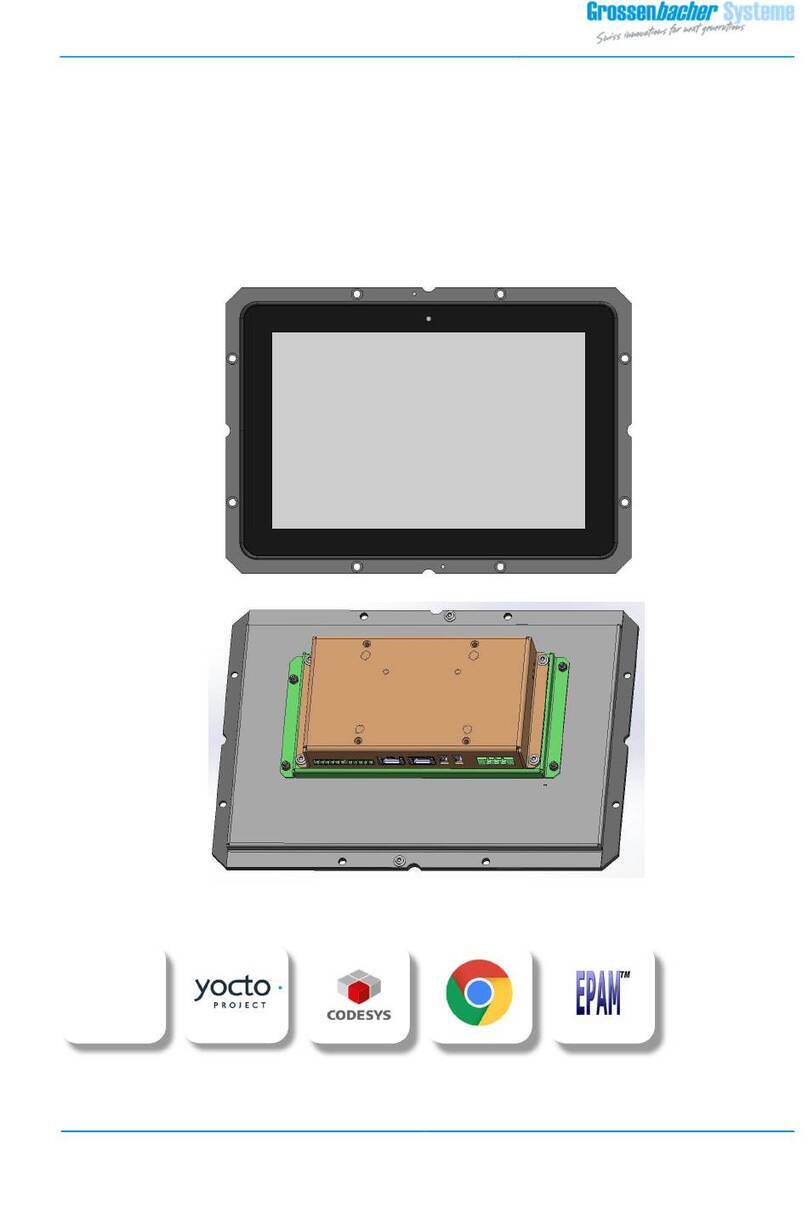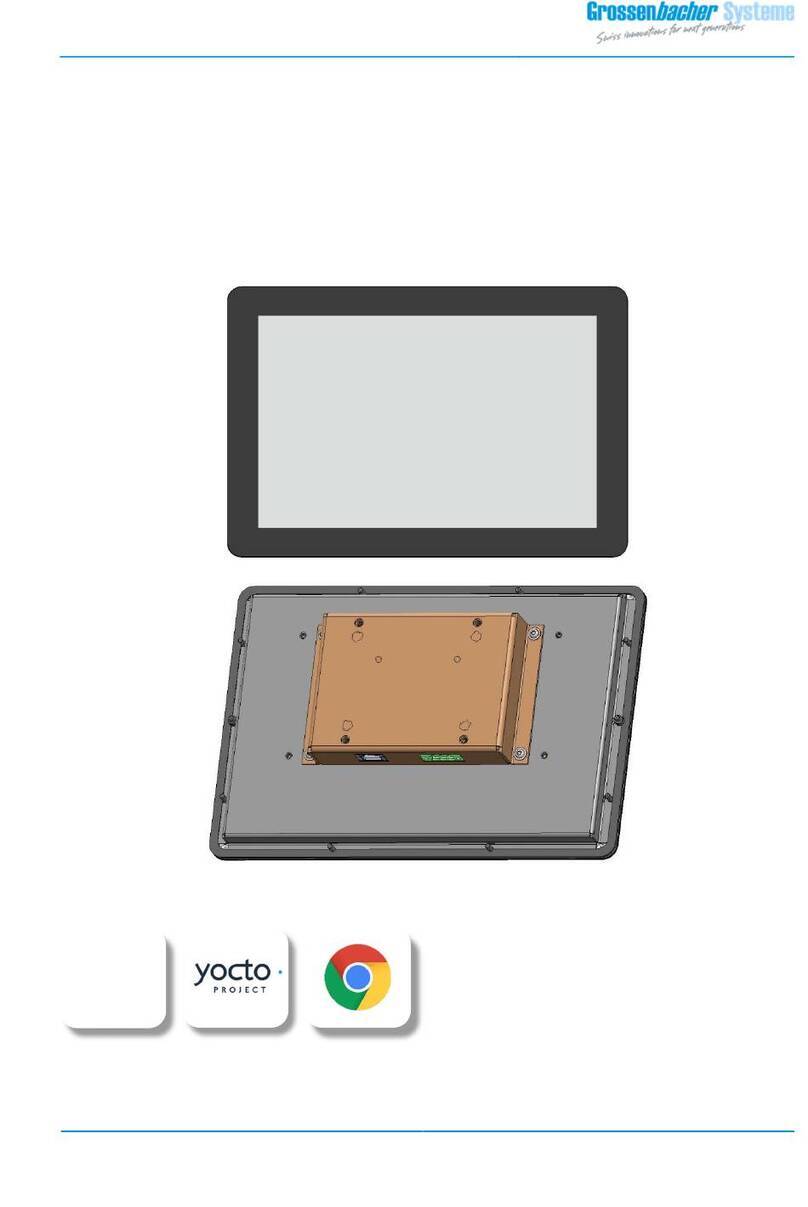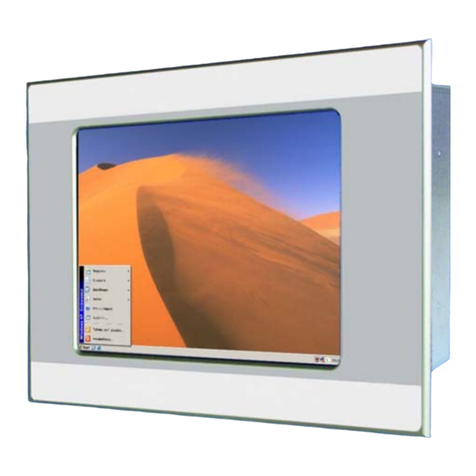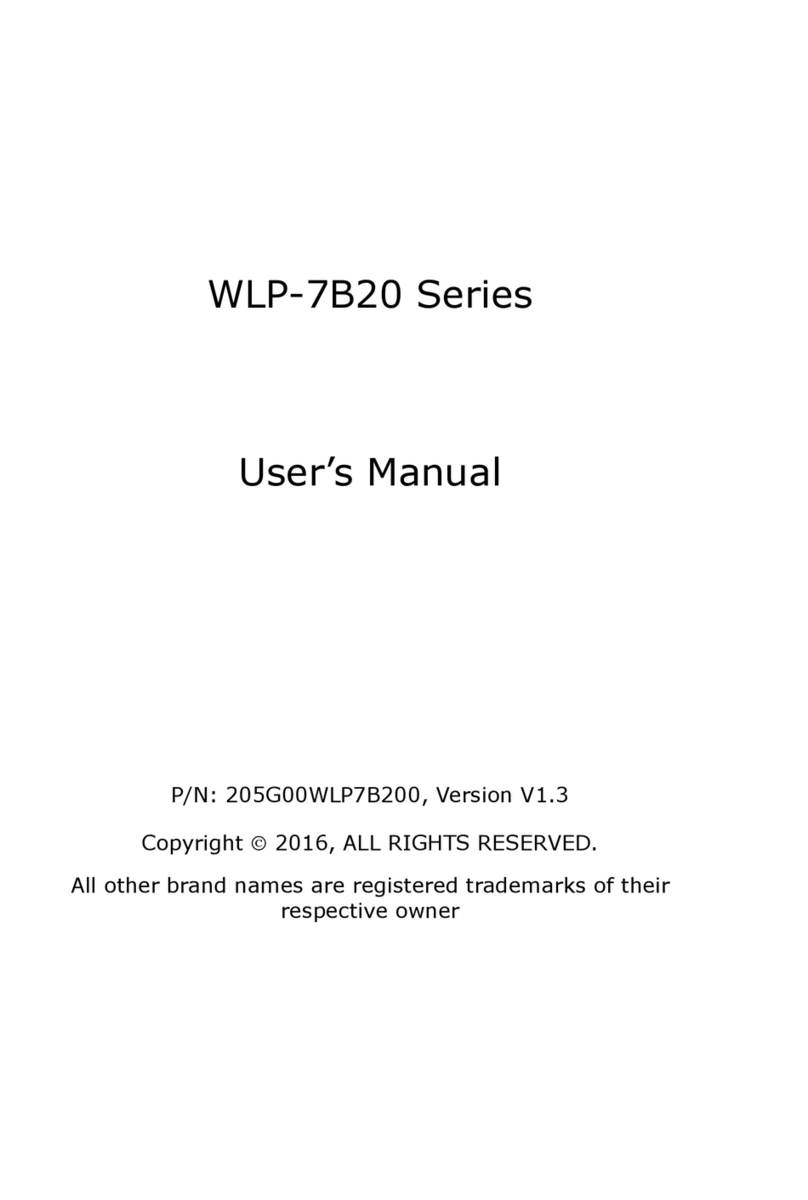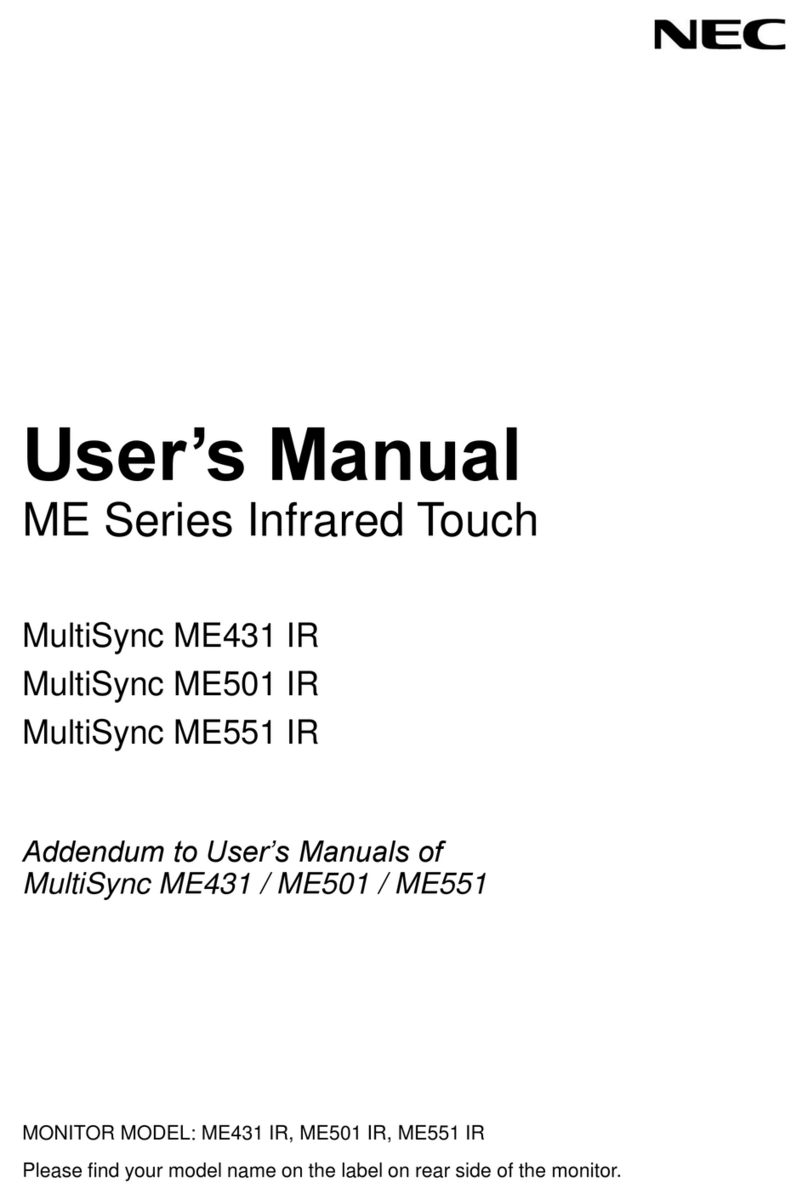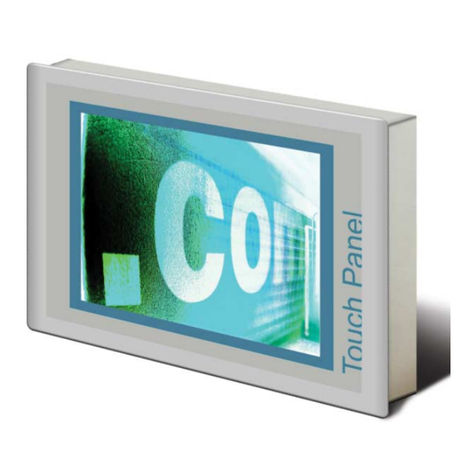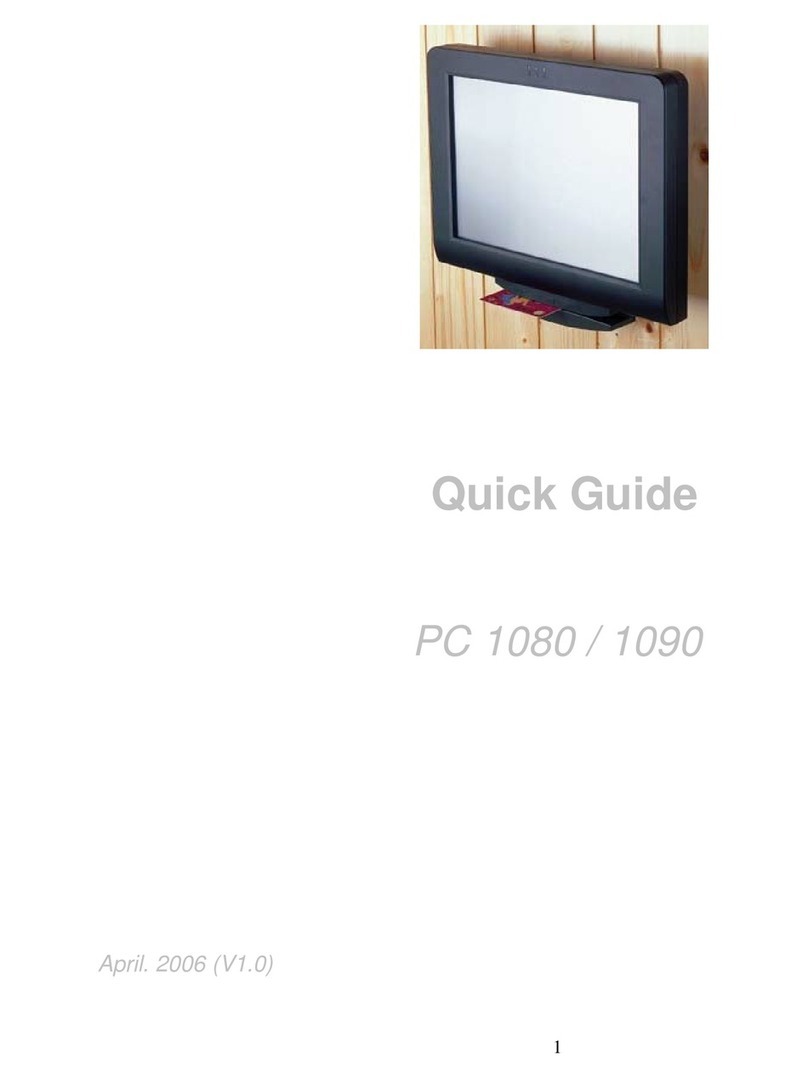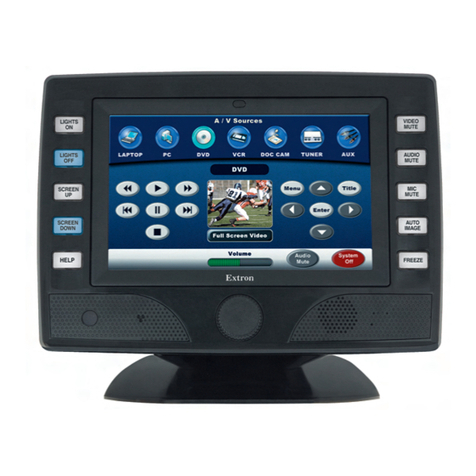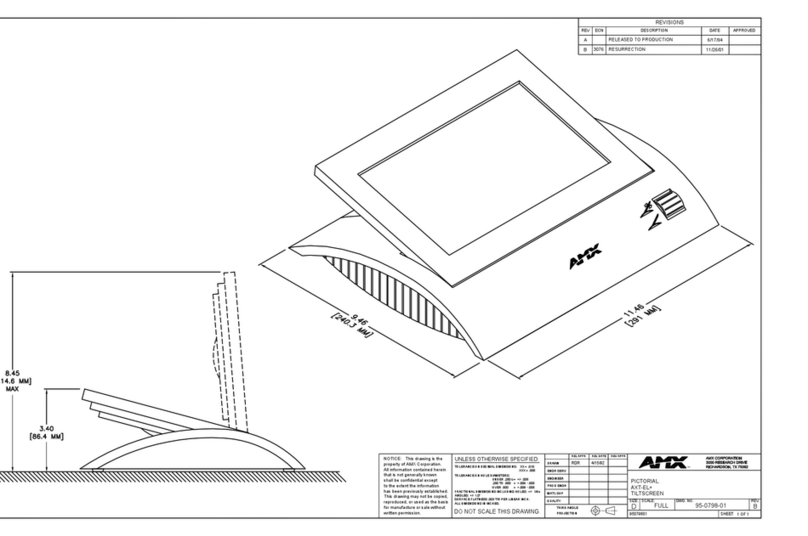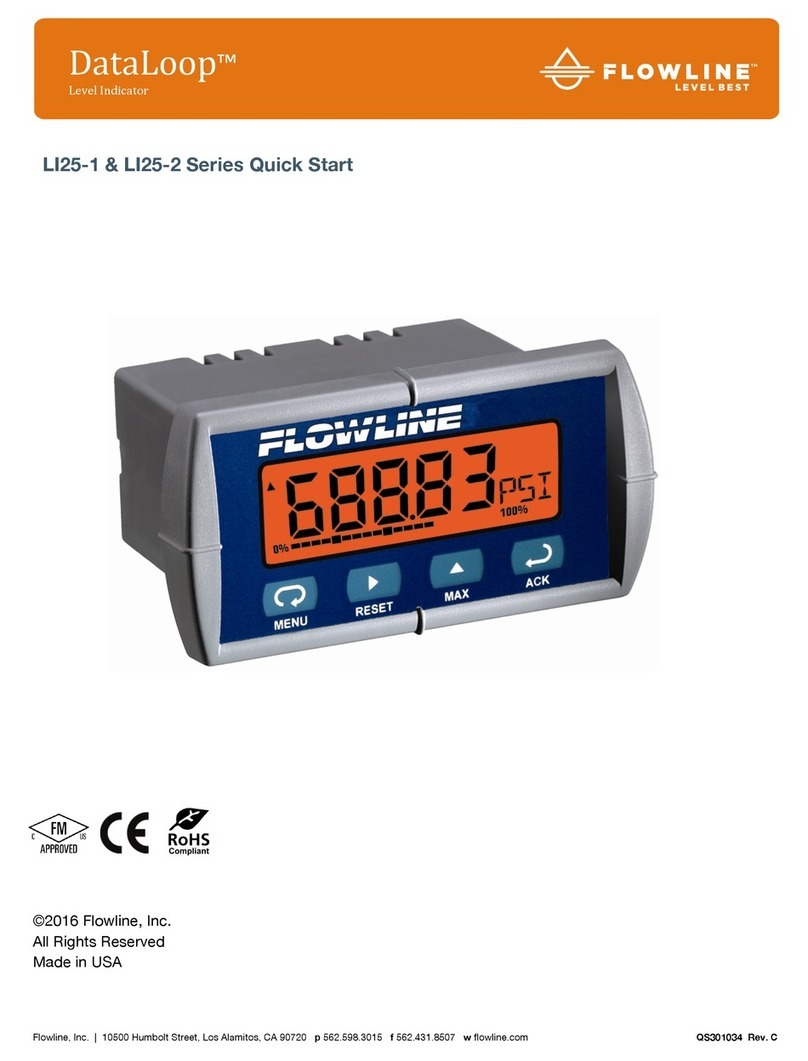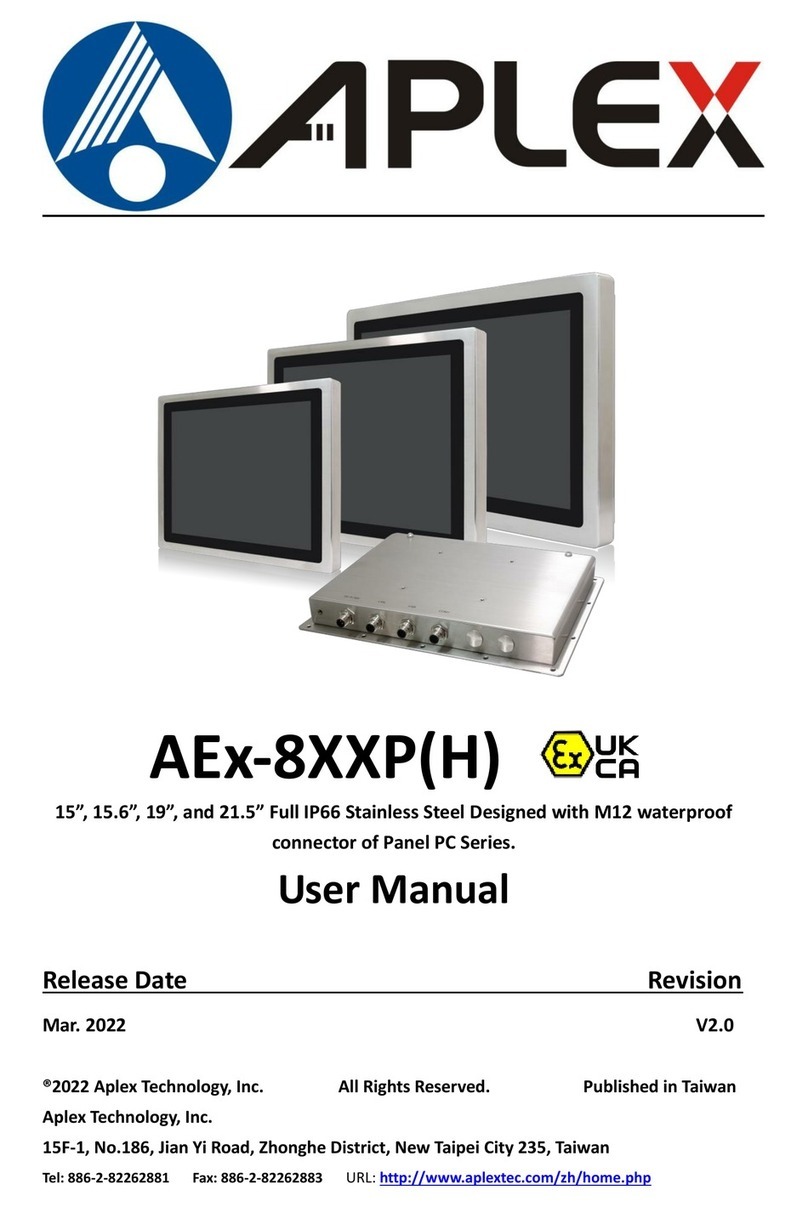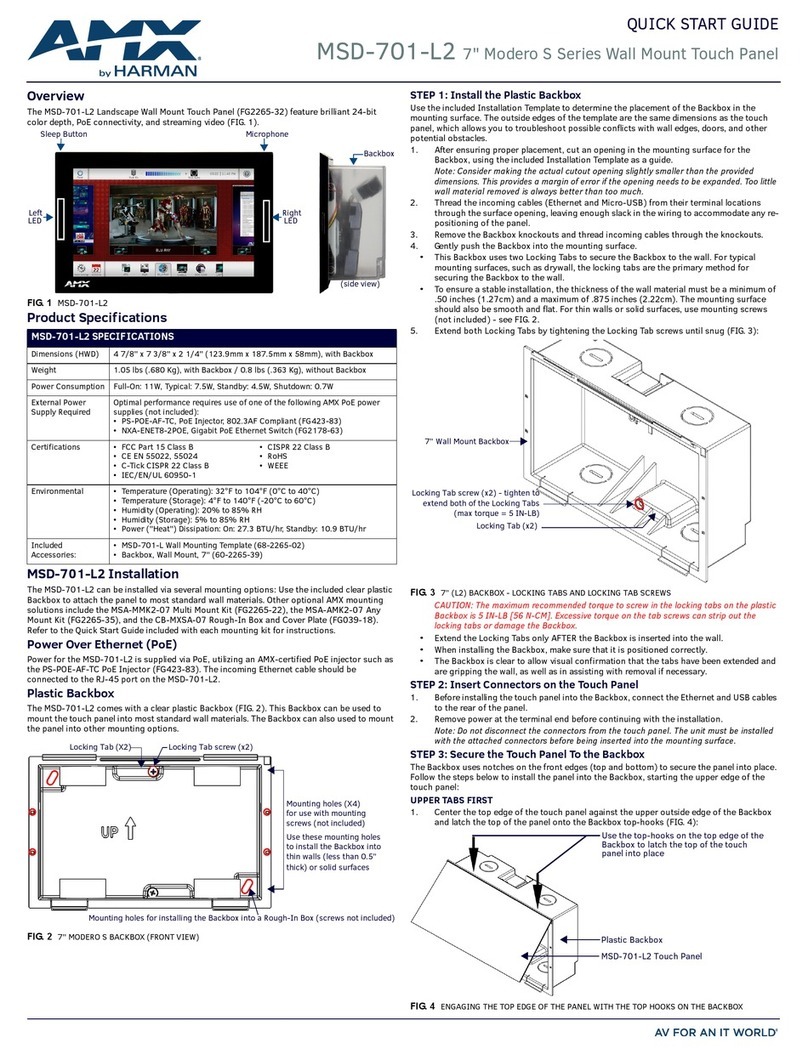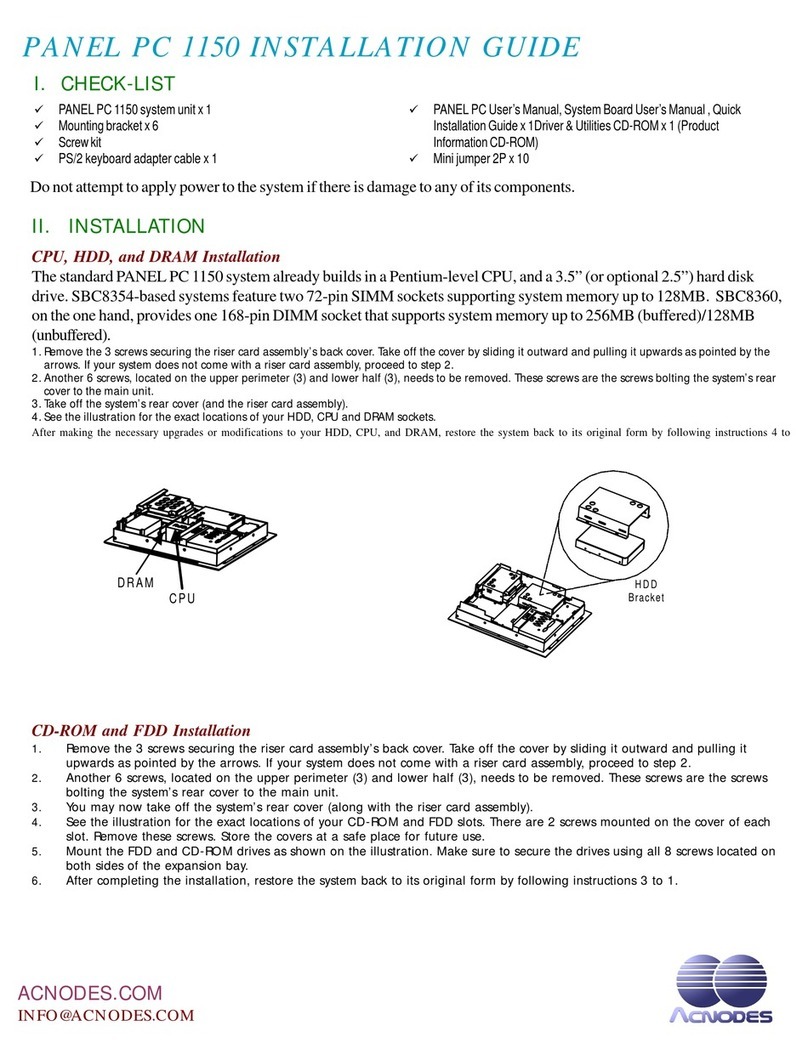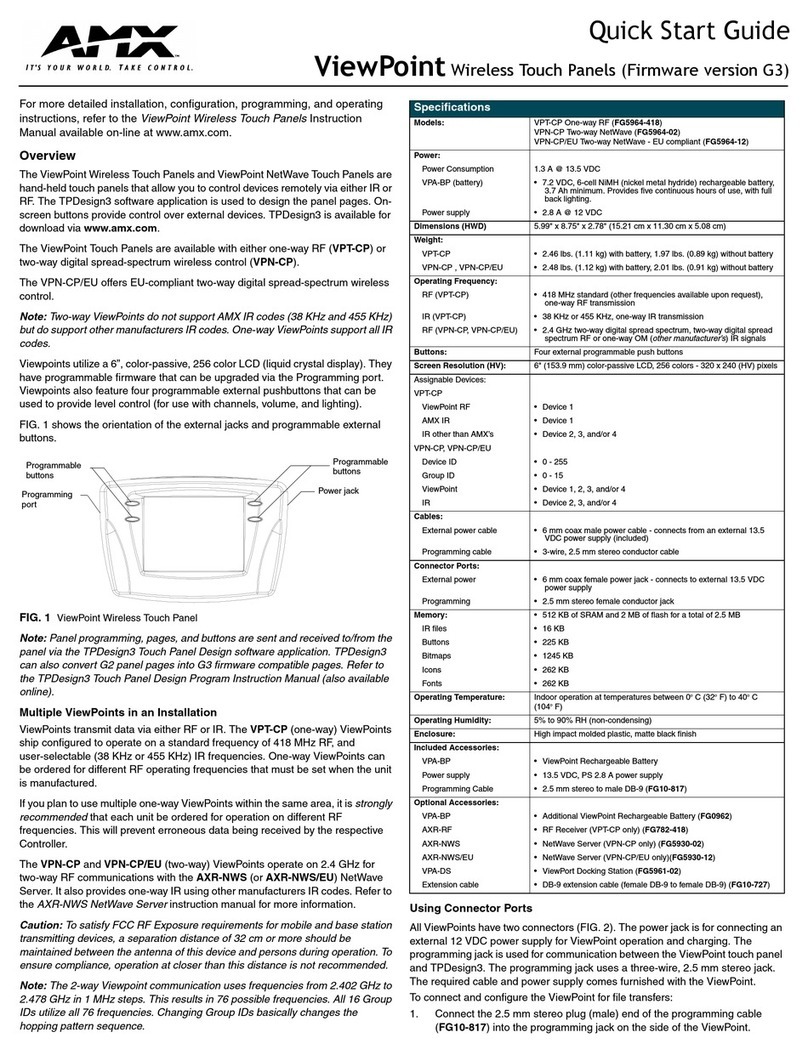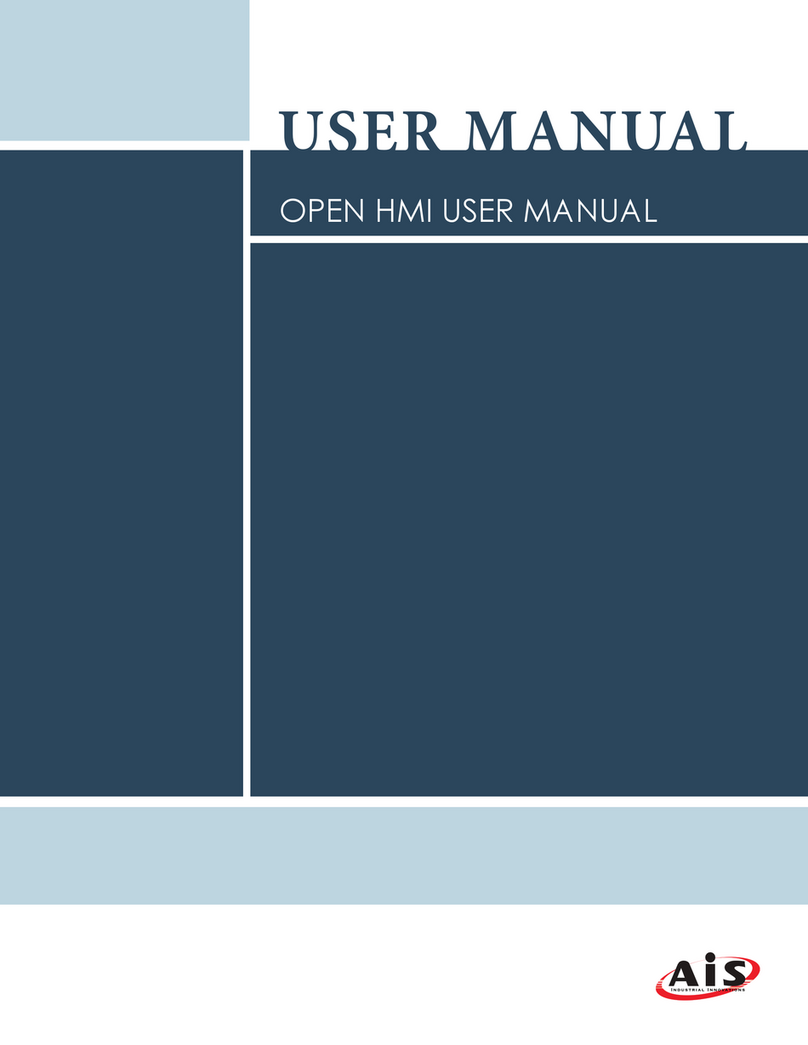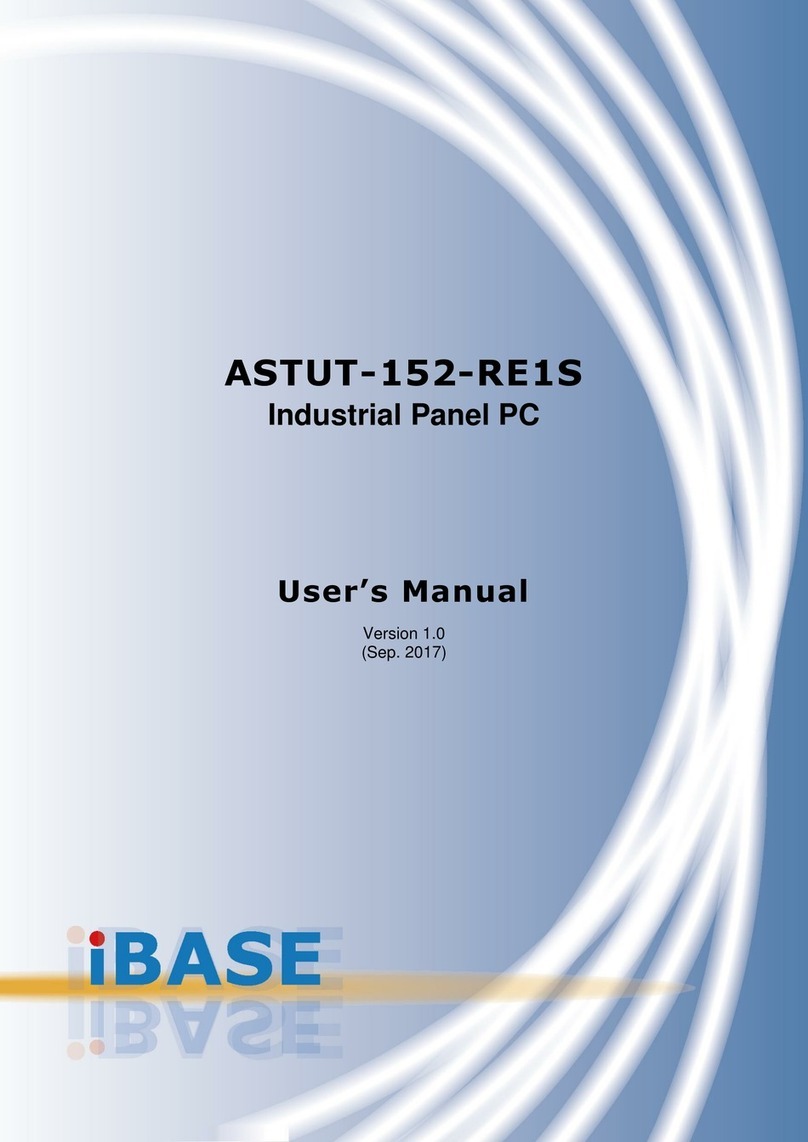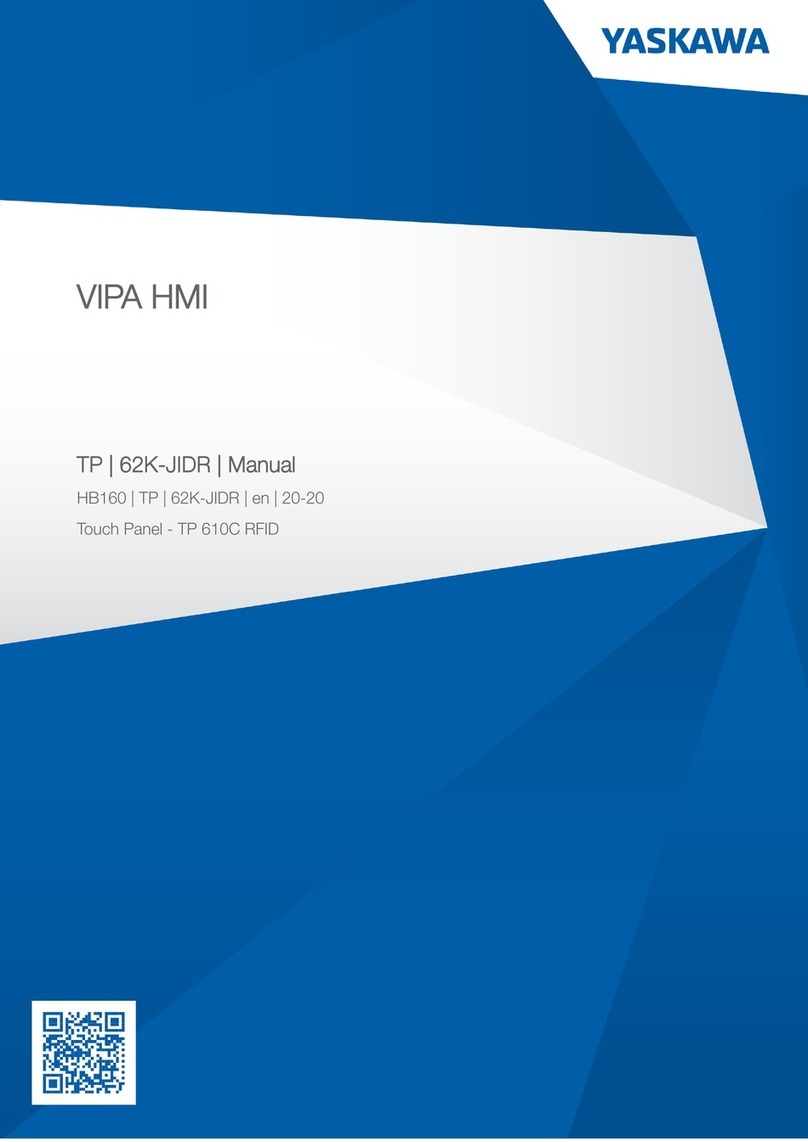
EthernetPanel
Hardware EthernetPanel
© 2010 by Grossenbacher Systeme AG DVS 60646 V1.0 5
Contents
1
Explanation of symbols................................................. 7
2
Introduction.................................................................... 9
3
Device Versions ........................................................... 11
3.1 Specification ......................................................................... 11
3.2 Accessories ..........................................................................12
4
Features........................................................................ 13
5
Commissioning............................................................ 15
5.1 Overview of connections ......................................................15
5.2 Connecting the power supply ...............................................15
5.3 Power Fail and UPS .............................................................16
5.4 Fuse .....................................................................................16
5.5 Battery ..................................................................................16
5.6 Preparing the shield connections .........................................17
5.7 Connecting the Ethernet.......................................................18
5.8 Connecting the USB-Interface..............................................18
5.9 Connection for COM1 serial interface (RS232)....................19
5.10 CAN interface...................................................................19
5.11 Inserting / Removing the CompactFlash™.......................22
5.12 Inserting / Removing the SDCARD™ ..............................22
5.13 Expansion PC/104-Slot....................................................22
5.14 Expansion PC/104-Slot....................................................22
6
Operation...................................................................... 23
6.1 Startup / Shutdown behaviour ..............................................23
6.2 System-Settings ...................................................................23
7
Mounting instructions ................................................. 25
7.1 General mounting instructions..............................................25
7.2 Mounting in the front panel - General...................................25
7.3 Front panel cutout 5,7“ to 15“ ..............................................26
7.4 Mechanical dimensions - Frontside 5,7“ to 15“....................29
7.5 Mechanical dimensions - Rear side 5,7“ to 15 .....................32
8
Notes on the touch-screen.......................................... 39
8.1 Basic touch-screen function .................................................39
9
Backlight, contrast....................................................... 41
9.1 Contrast................................................................................41
9.2 Backlight...............................................................................41
9.3 Diagnostics...........................................................................41
10
Maintenance and repair............................................... 43
11
Technical data.............................................................. 45
12
Disposal........................................................................ 47
13
EU Conformity and Standards.................................... 49
14
Revision history........................................................... 51
15
Alphabetical index ....................................................... 53
